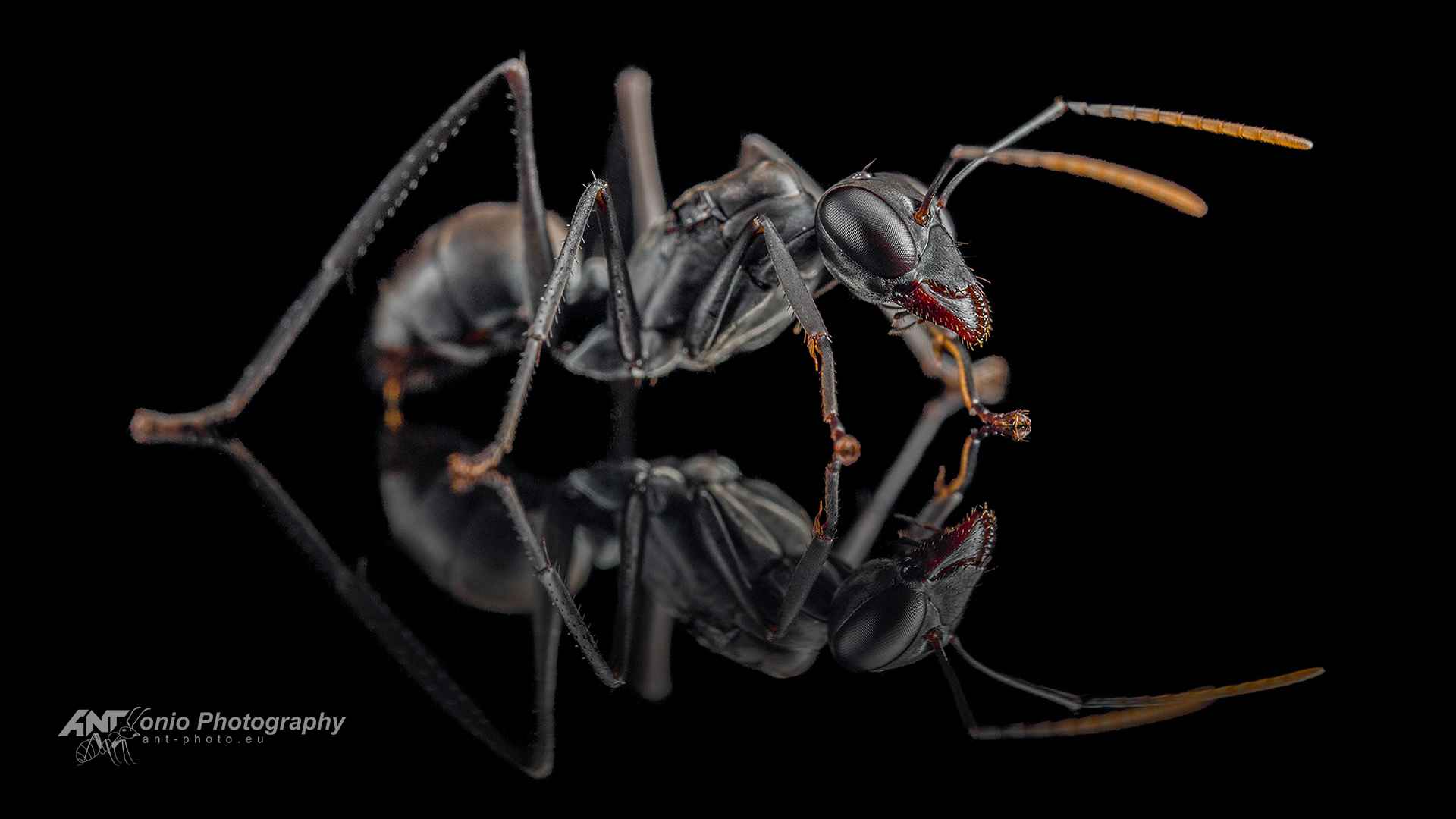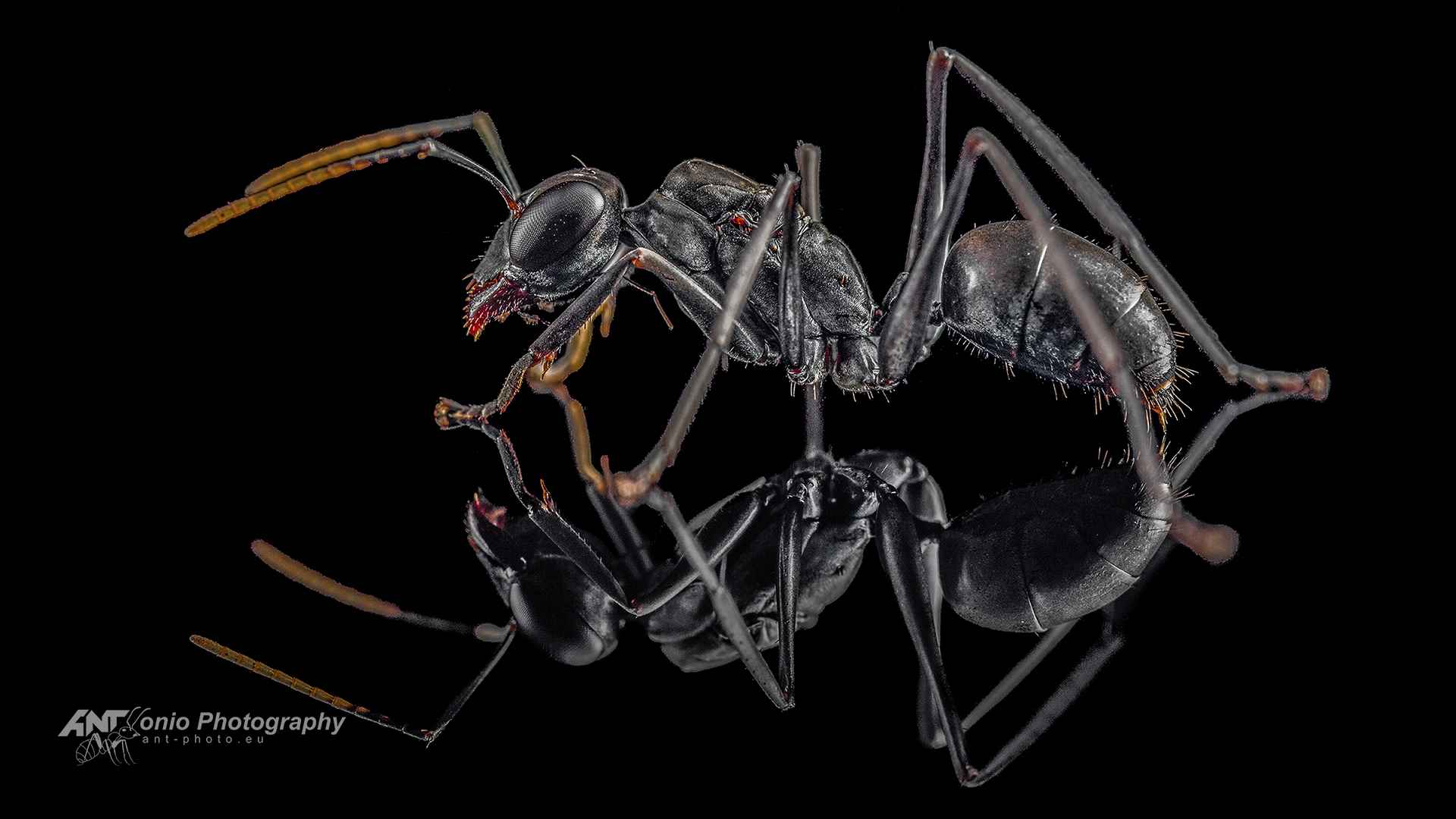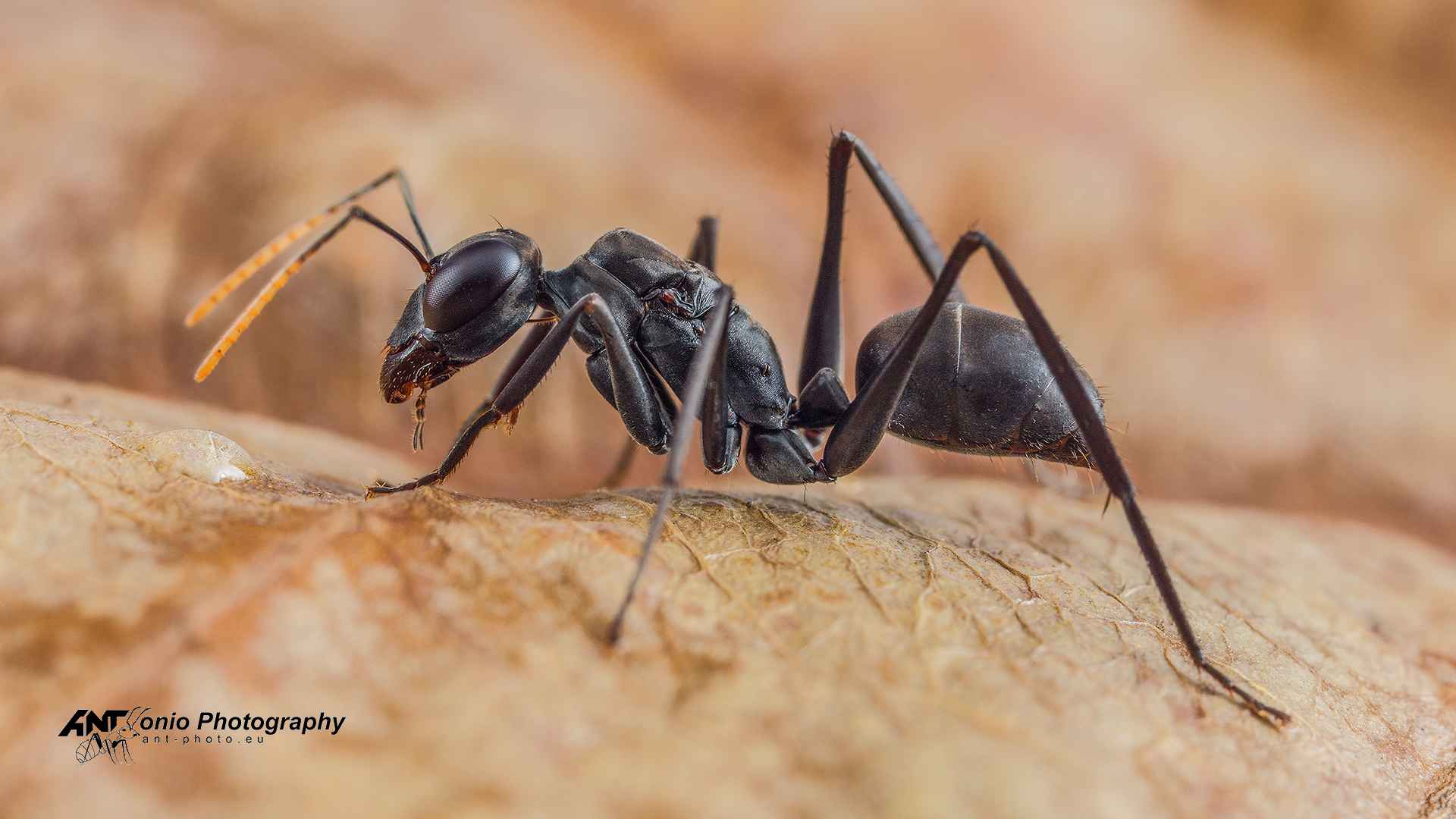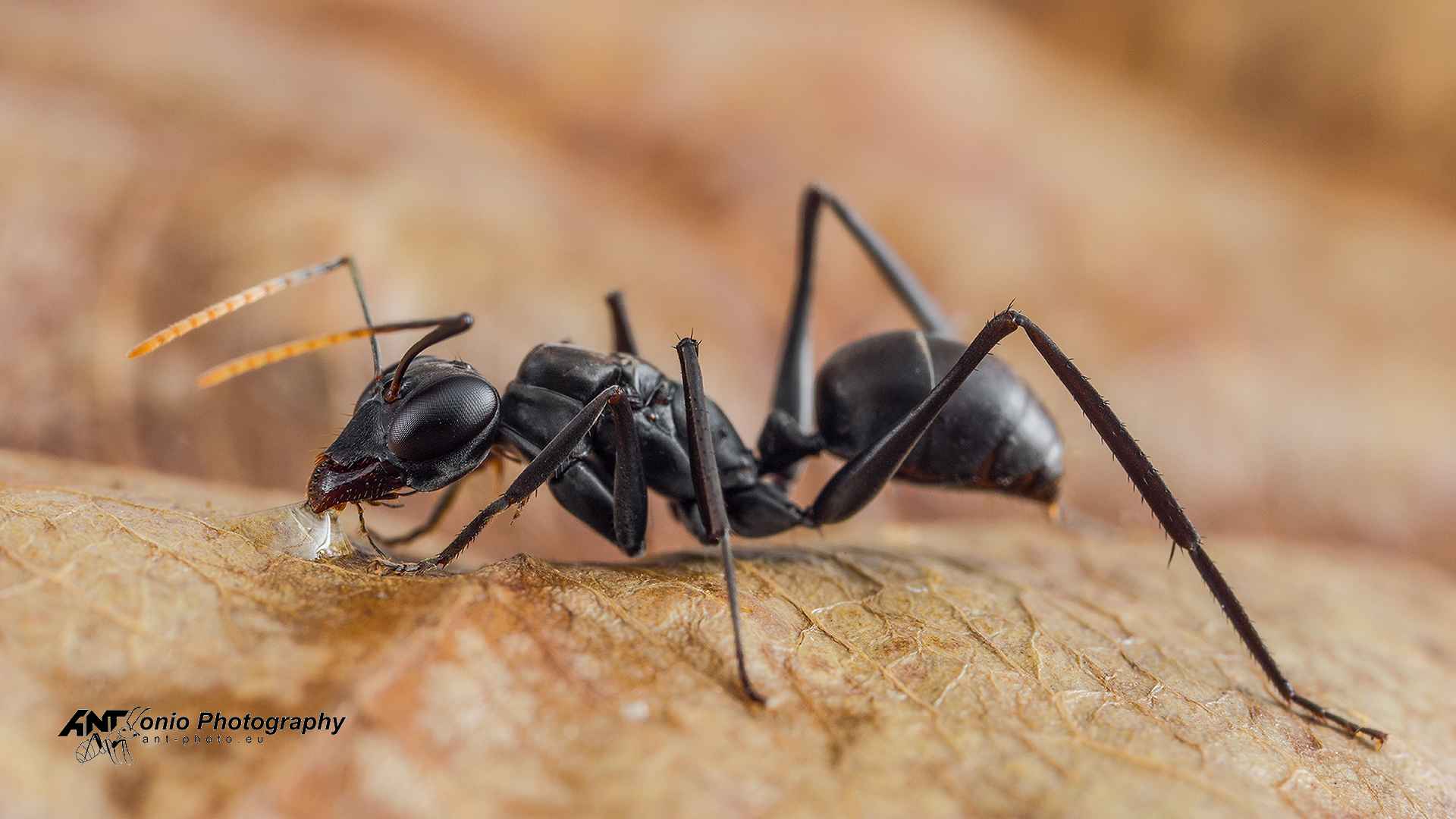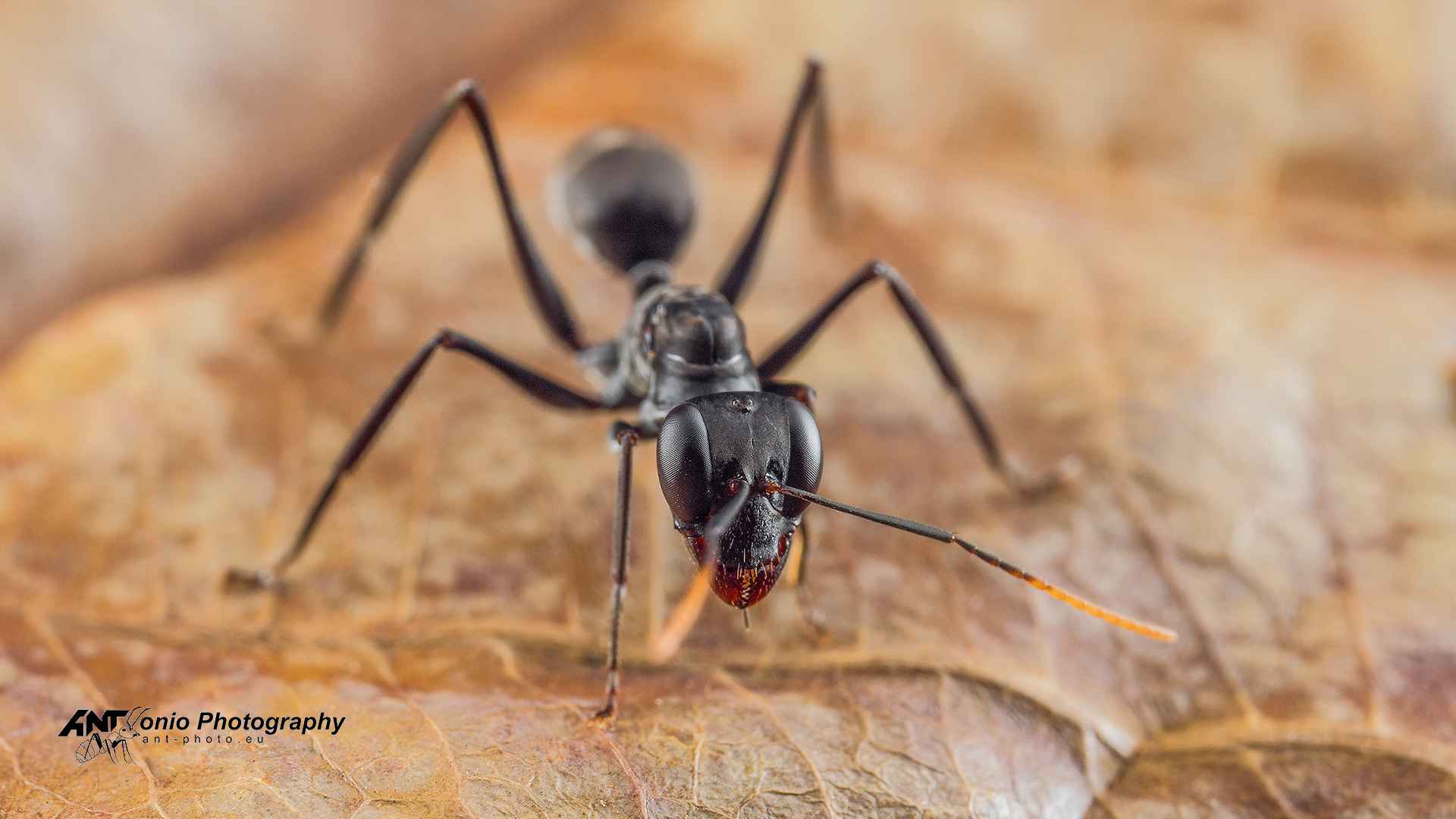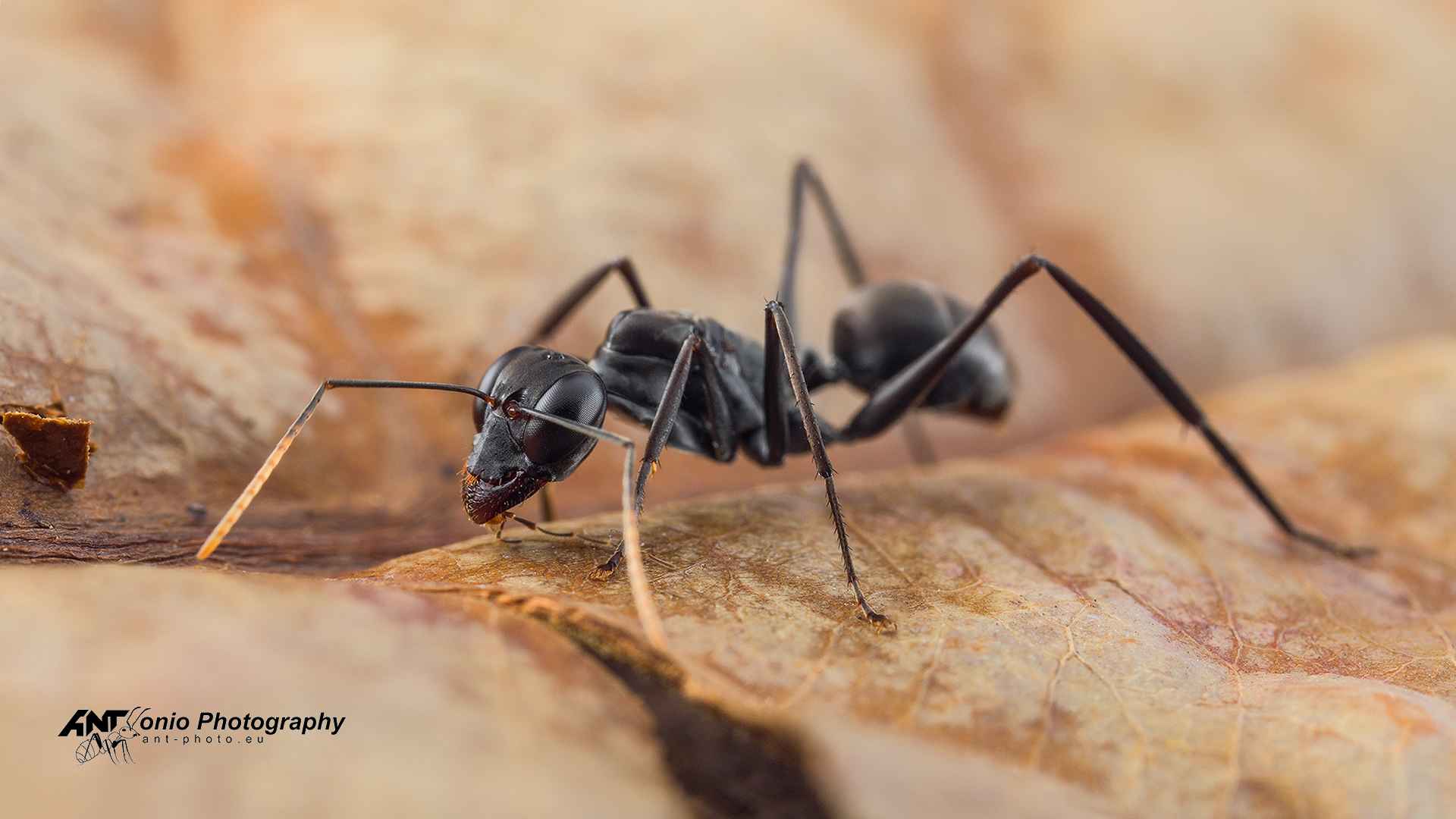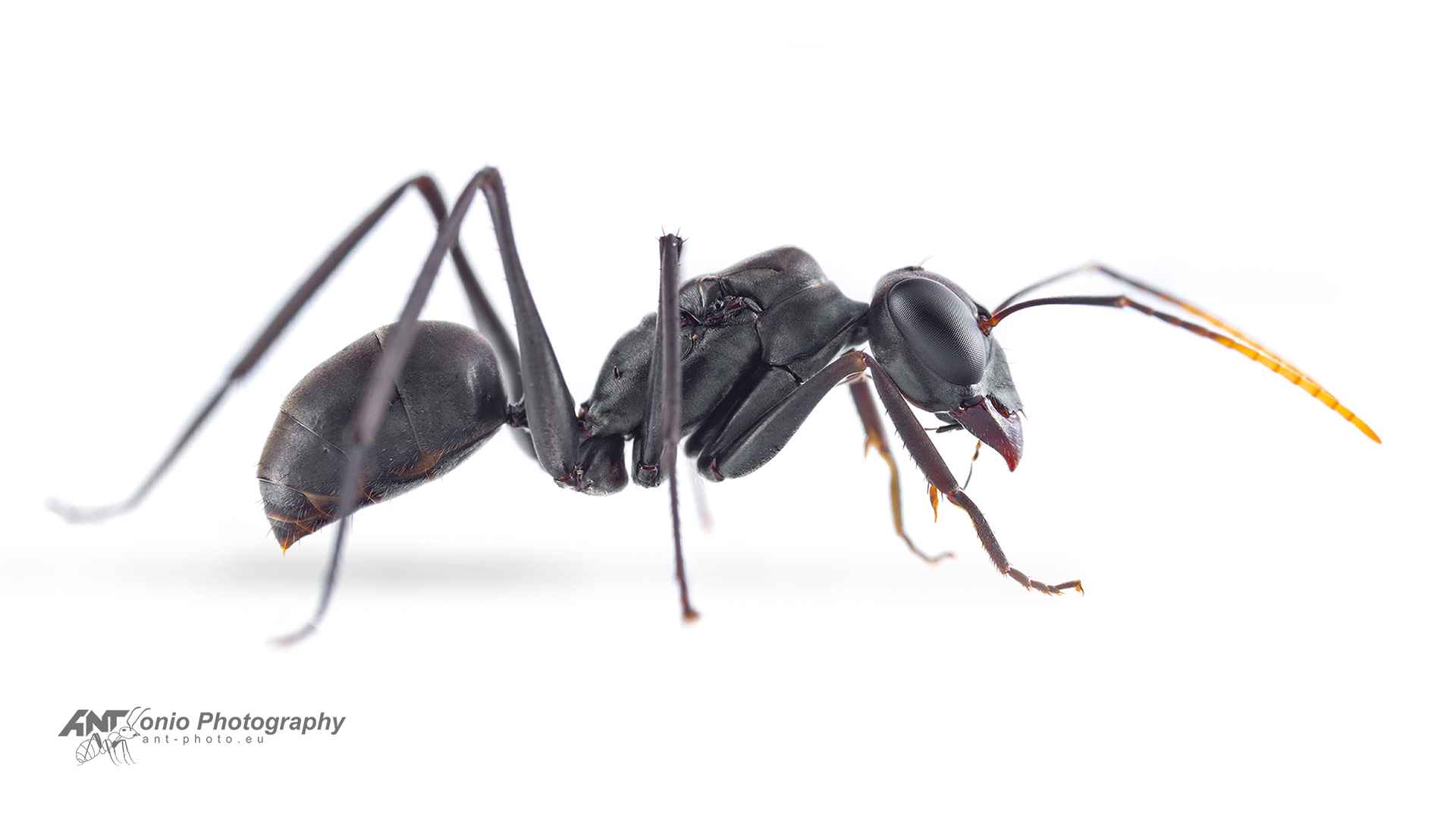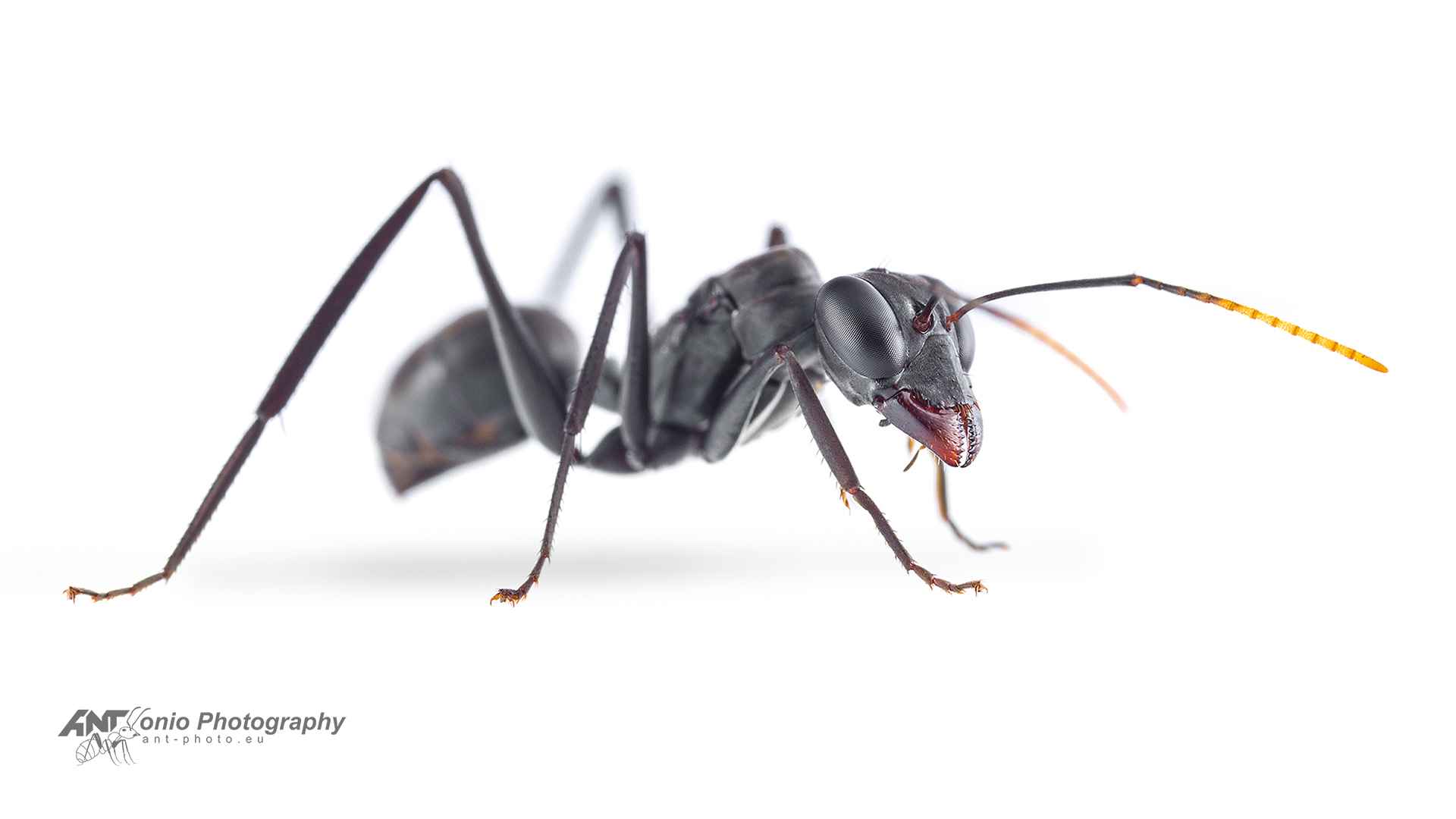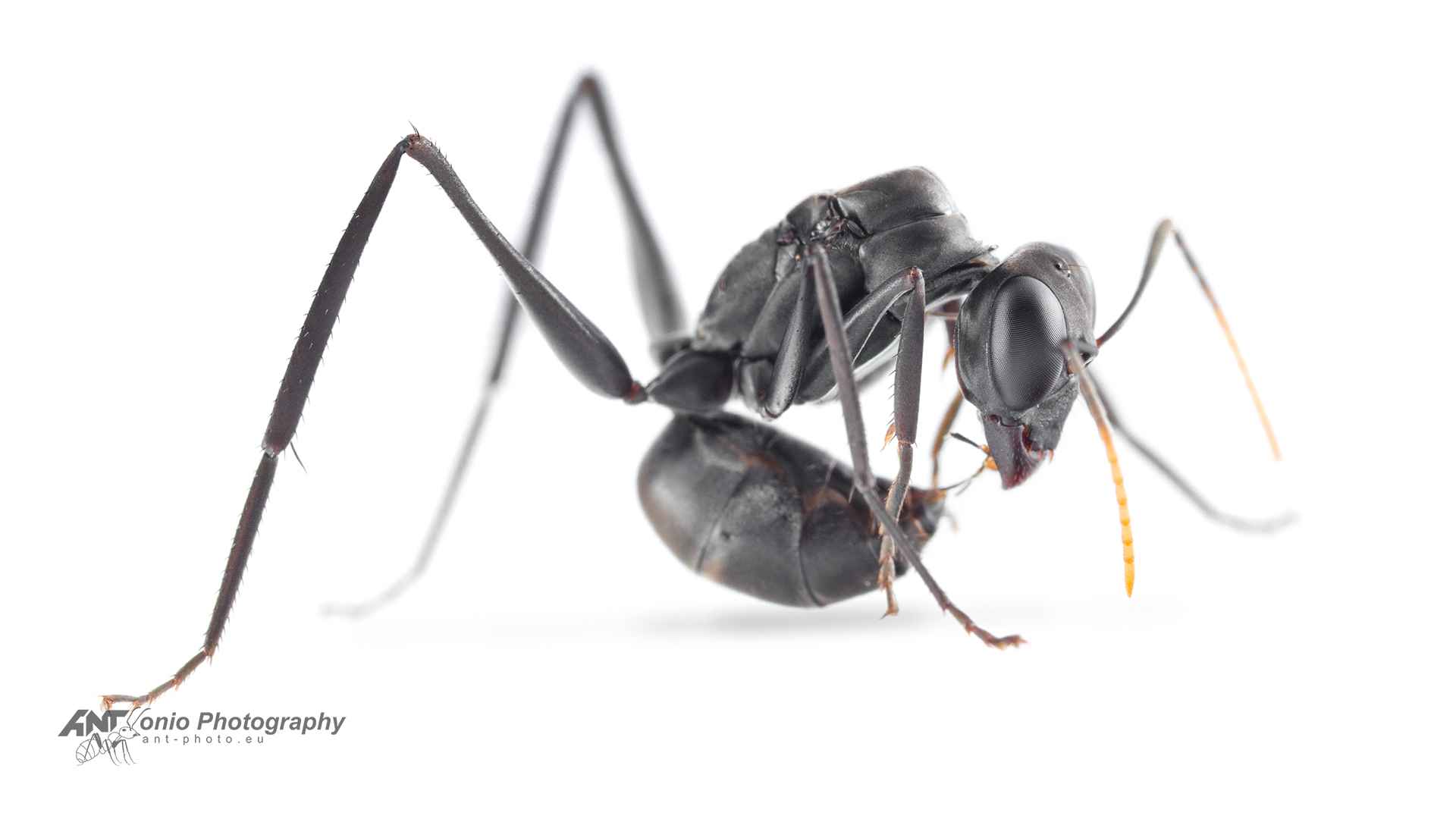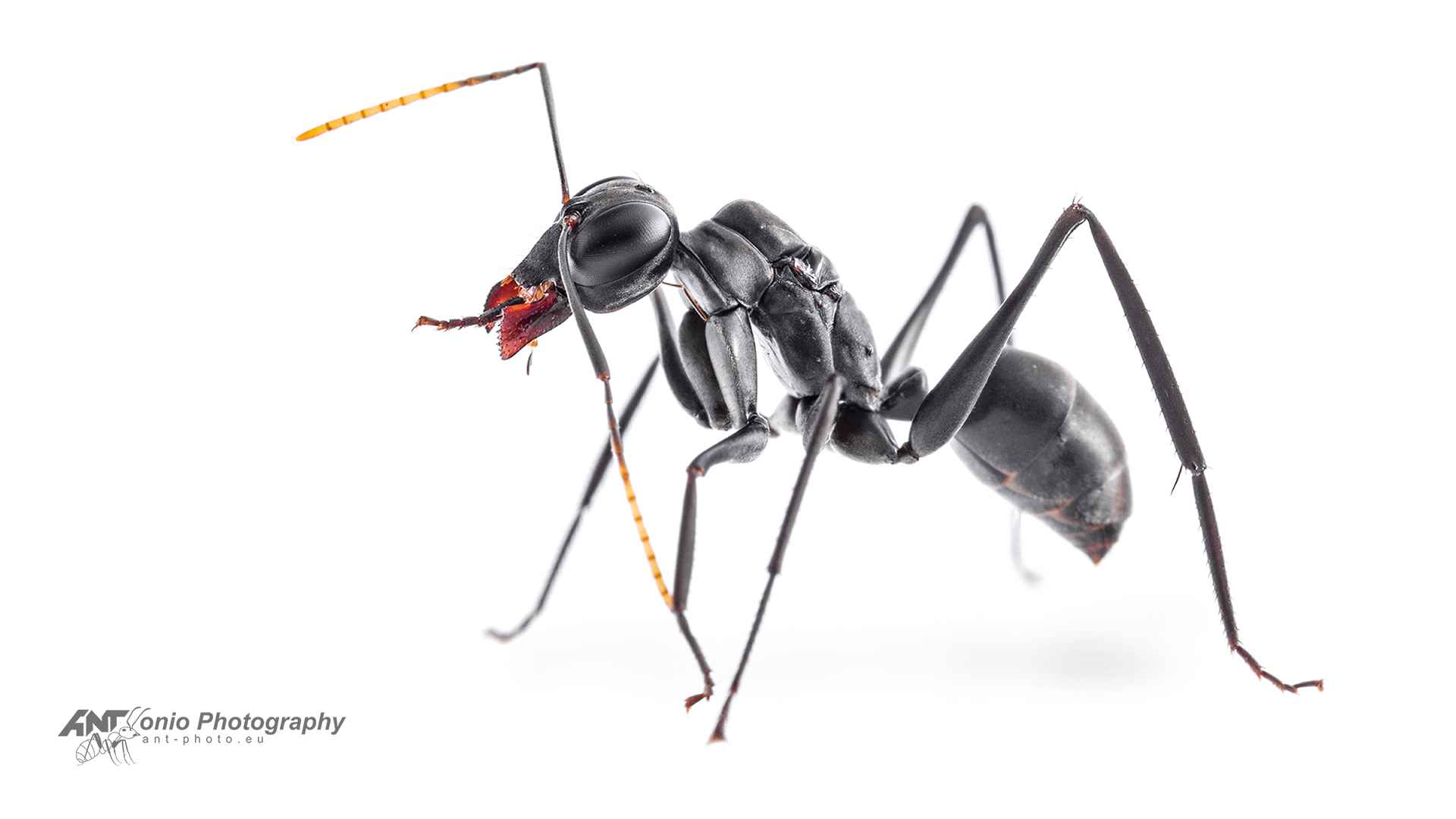Gigantiops destructor
| Rodzina | Family: | Formicidae |
| Podrodzina | Subfamily: | Formicinae |
| Plemię | Tribe: | Gigantiopini |
| Rodzaj | Genus: | Gigantiops |
| Gatunek | Species: | G. destructor |
![]() Gigatiops destructor to mrówki występujące w Ameryce Południowej. Zamieszkują Brazylię, Kolumbię, Ekwador, Gujanę, Gujanę Francuską, Peru, Surinam i Wenezuelę. Gatunek ten wyróżnia się na tle innych mrówek co najmniej dwoma cechami. Pierwsza z nich, to niebywale duże oczy – największe wśród wszystkich przedstawicieli Formicidae. Co za tym idzie, Gigantiops destructor poszukują pokarmu wyłącznie za dnia. Zbierają spadź i nektar oraz polują na niewielkie bezkręgowce, ale tylko wtedy, kiedy te się poruszają. Kiedy potencjalna ofiara zatrzymuje się, mrówka traci nią zainteresowanie. Drugą cechą jest fakt, że Gigantiops destructor są, jak na mrówki, wyjątkowo samodzielne. Robotnice poszukują pokarmu zawsze w pojedynkę i nigdy nie wzywają towarzyszek na pomoc. Jest to posunięte do tego stopnia, że czasem dwóm robotnicom z jednego gniazda zdarza się walczyć o jedną zdobycz. Wiele aspektów biologii tego gatunku wciąż owianych jest tajemnicą, a zachowanie tych mrówek nie ułatwia rozwiązywania zagadek z ich życia. Badacze przez długi czas nie byli w stanie odkryć gniazda tych mrówek, ponieważ kiedy robotnica zauważyła człowieka, nie szła do gniazda, a jedynie chowała się w ściółce. Kolejną ciekawostką jest fakt, że Gigatiops destructor został znaleziony gniazdując wspólnie z inną dużą mrówką – Paraponera clavata. Oba gatunki nie wykazują wobec siebie agresji.
Gigatiops destructor to mrówki występujące w Ameryce Południowej. Zamieszkują Brazylię, Kolumbię, Ekwador, Gujanę, Gujanę Francuską, Peru, Surinam i Wenezuelę. Gatunek ten wyróżnia się na tle innych mrówek co najmniej dwoma cechami. Pierwsza z nich, to niebywale duże oczy – największe wśród wszystkich przedstawicieli Formicidae. Co za tym idzie, Gigantiops destructor poszukują pokarmu wyłącznie za dnia. Zbierają spadź i nektar oraz polują na niewielkie bezkręgowce, ale tylko wtedy, kiedy te się poruszają. Kiedy potencjalna ofiara zatrzymuje się, mrówka traci nią zainteresowanie. Drugą cechą jest fakt, że Gigantiops destructor są, jak na mrówki, wyjątkowo samodzielne. Robotnice poszukują pokarmu zawsze w pojedynkę i nigdy nie wzywają towarzyszek na pomoc. Jest to posunięte do tego stopnia, że czasem dwóm robotnicom z jednego gniazda zdarza się walczyć o jedną zdobycz. Wiele aspektów biologii tego gatunku wciąż owianych jest tajemnicą, a zachowanie tych mrówek nie ułatwia rozwiązywania zagadek z ich życia. Badacze przez długi czas nie byli w stanie odkryć gniazda tych mrówek, ponieważ kiedy robotnica zauważyła człowieka, nie szła do gniazda, a jedynie chowała się w ściółce. Kolejną ciekawostką jest fakt, że Gigatiops destructor został znaleziony gniazdując wspólnie z inną dużą mrówką – Paraponera clavata. Oba gatunki nie wykazują wobec siebie agresji.
![]() Gigantiops destructor is an ant species distributed in South America. It can be found in Brazil, Colombia, Ecuador, French Guyana, Guyana, Peru, Suriname and Venezuela. There are at least two features, which make this species special among other ants. Firstly – extremely large eyes, the largest of all Formicidae members. Consequently, Gigantiops destructor workers only forage during the day. They collect honeydew and nectar, as well as hunt small invertebrates, but only when they are moving. When a potential prey stops, the ant loses interest in hunting. The second feature is that Gigantiops destructor worker are extremely independent. They always look for food alone and never recruit nestmates. Sometimes even two workers from one nest can fight for one prey item. Many aspects of this species’ biology are still unknown, and behavior of the ants does not make it easier to solve it. For a long time, researchers were even not able to discover the nest of these ants. When the worker noticed a human, it did not go to the nest, but rather stay still or hid in the litter. Another interesting fact is that Gigantiops destructor was found nesting together with another large ant species – Paraponera clavata. Both species seem to show no aggression towards each other.
Gigantiops destructor is an ant species distributed in South America. It can be found in Brazil, Colombia, Ecuador, French Guyana, Guyana, Peru, Suriname and Venezuela. There are at least two features, which make this species special among other ants. Firstly – extremely large eyes, the largest of all Formicidae members. Consequently, Gigantiops destructor workers only forage during the day. They collect honeydew and nectar, as well as hunt small invertebrates, but only when they are moving. When a potential prey stops, the ant loses interest in hunting. The second feature is that Gigantiops destructor worker are extremely independent. They always look for food alone and never recruit nestmates. Sometimes even two workers from one nest can fight for one prey item. Many aspects of this species’ biology are still unknown, and behavior of the ants does not make it easier to solve it. For a long time, researchers were even not able to discover the nest of these ants. When the worker noticed a human, it did not go to the nest, but rather stay still or hid in the litter. Another interesting fact is that Gigantiops destructor was found nesting together with another large ant species – Paraponera clavata. Both species seem to show no aggression towards each other.


